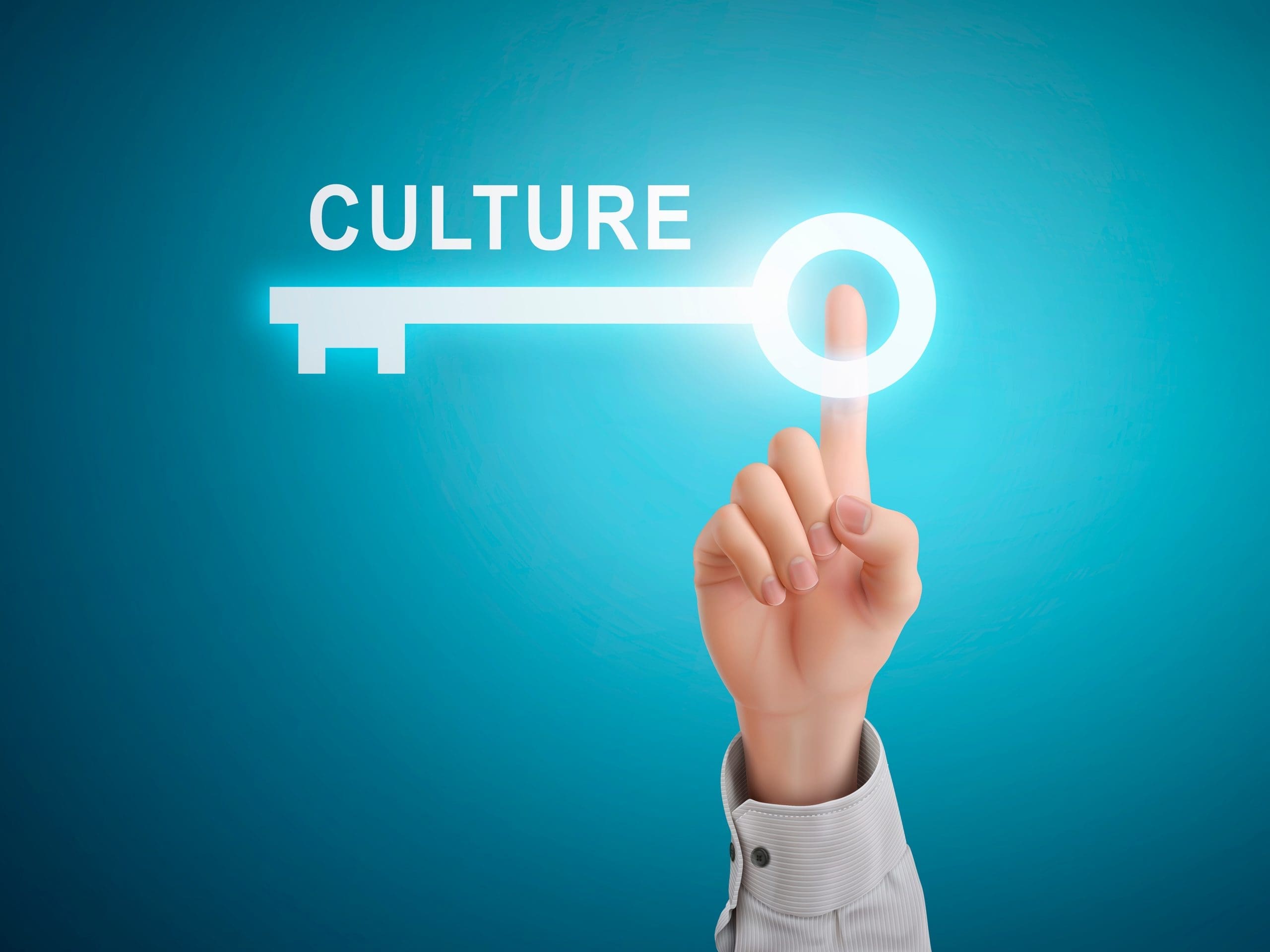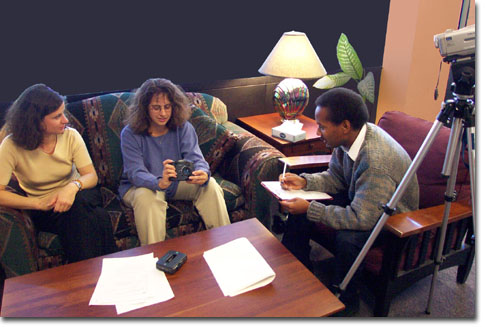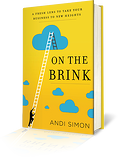I have the privilege of working with business leaders across industries, and I hear the same questions over and over:
- How do I make my company culture better?
- Sales have stalled – how can I jump start them?
- How do I keep my company growing in a tough economy?
When I see that look in their eyes, I start talking about the benefits of anthropology for businesses. If you’re asking yourself those questions and feel that tinge of anxiety, you’re in the right place.
Corporate anthropology can help.
Here’s how it works.
Anthropology is the systematic application of research tools that academics use for studying cultures applied to complex societies, and in particular to businesses, corporations. and even not-for-profit organizations. Today it is being used to help companies increase sales, rebuild new corporate cultures, engage employees and find new customers.
Anthropology in the traditional sense focuses on all those things that make us special as humans: the language, symbols and stories we share; the things that we value and believe in; and the wonderful variety in our groups, cultures, and sub-cultures. Just like these things exist in broad civilizations, every business has its own distinct culture.
Applying anthropological methodologies and techniques to organizations gives us a framework for making new connections that are hiding in plain sight. It’s a powerful toolkit for exploring the most persistent questions about everything from customers and their needs to your sales processes and value proposition. The theory, method and tools can really help business leaders see the changes taking place in their industries and business environments. And, hopefully help them adapt to these changes before they impact their organization.
WHAT CAN YOU LEARN USING A LITTLE ANTHROPOLOGY?
The questions that we turn to our anthropology toolkit to address are quite familiar to business leaders. Here are some of the most common areas:
- What is your business culture? Your business has a set of values, beliefs, and behaviors that are
 unique. As humans, we need culture to live and work effectively. Businesses are constantly creating and reinforcing their own culture with every interaction and passing it on to new hires. Onboarding, as you probably are aware, is specifically designed to help new employees understand a company’s culture and adapt their own behaviors to better conform to these standards. The result is that companies need to understand what intentional and unintentional messages and norms make up that culture and which will best serve it in changing business environments. The task is to intentionally craft the kind of culture you want and need moving forward.
unique. As humans, we need culture to live and work effectively. Businesses are constantly creating and reinforcing their own culture with every interaction and passing it on to new hires. Onboarding, as you probably are aware, is specifically designed to help new employees understand a company’s culture and adapt their own behaviors to better conform to these standards. The result is that companies need to understand what intentional and unintentional messages and norms make up that culture and which will best serve it in changing business environments. The task is to intentionally craft the kind of culture you want and need moving forward.
- What do your customers actually do? We spend too much time in our own heads. We do our work and analyze our results with spreadsheets and dollar signs, but they don’t tell the whole story. You need to interact with customers directly to understand their needs. Being there when they use your products or services, observing them go about their daily lives, and asking the right questions to get at their stories and memories is how you see the hidden reality. There are lots of ways to do that. “Spend a day in the life of your customer” is one method. Another is to “hang out” and watch them use your products. A third is to play innovation games with them and see how they would “Create a Better Product Box” for you. But don’t ask them. They really cannot tell you what they are doing; just what they think you want to hear.
- What opportunities are you missing? There are new product, service, and sales opportunities waiting right under your nose. If you’re like most leaders, you’re too buried to see them, or
 there just isn’t a good system set up to separate the wheat from the chaff. That wheat is too valuable to leave in the field. That messy mix of ideas is where the future lives, and you need to figure out how to harness it. Tools like observational research, ethnography, deep hanging out, and storytelling allow C-suite and management teams to see, feel, and think fresh eyes. Sometimes our clients have found big new ideas coming right through their own employees and even from their call centers.
there just isn’t a good system set up to separate the wheat from the chaff. That wheat is too valuable to leave in the field. That messy mix of ideas is where the future lives, and you need to figure out how to harness it. Tools like observational research, ethnography, deep hanging out, and storytelling allow C-suite and management teams to see, feel, and think fresh eyes. Sometimes our clients have found big new ideas coming right through their own employees and even from their call centers.
Tools You Could Use
Here is an introduction to some of the powerful methods we use and how they can benefit your business, with a specific focus on culture change and customer research.
How to better understand and perhaps change you company’s culture?
- Culture Assessment: Any kind of culture change starts by understanding what’s going on already. The Organizational Culture Assessment Instrument (OCAI) is a powerful baseline for getting an overview of your organization’s culture. It is a validated tool developed by University of Michigan professors, and has been used by over 10,000 companies around the world.Once results are synthesized, leaders and employees alike will have a clear baseline for understanding their current culture. This kind of assessment will dovetail nicely with the more personal angle and insights that come from other tools like deep hanging out and observational research.
- Deep Hanging Out with Employees: Most executives spend a lot of time thinking about the big picture and the market, but not much time authentically listening and observing in their own hallways. For a pop culture primer, watch Undercover Boss and see the kind of insights that are waiting for you.

For this kind of “hanging out,” the focus is on listening, observing, and asking questions. Spending time in meetings as an observer, a silent copilot with your sales team, or listening in on customer service calls are all great opportunities to make notes, take photographs, and jot down thoughts.
Later, insights emerge when reflecting and synthesizing. Festering issues and needs will jump out, as will opportunities for change and potential solutions. The intersections between what executives and trained anthropologists see typically lead to even better ideas and insights. - ChangeMap™: We developed our ChangeMap process to help you actually get the changes you desire into your organization. Extensive research by Vital Smarts shows that the difference between effective and ineffective change is the use of several sources to influence that change, not just one. We have seen this over and over with our own clients, and have developed a specific process for identifying and linking four or more sources of influence so that businesses can create and actually sustain the change they want.By identifying and planning a multi-pronged approach to changing culture, your team can dramatically improve the chances of long-term success. Creating a shared road map gets everyone on the same page, and engaging multiple influence sources will reinforce new changes with different voices.
What if you need new customers?
You might try some of these tools:
- Culture Probes: This exercise takes preparation, but will drive conversations you never knew you could be having. Executives prepare open-ended questions they want to know more about from customers and non-customers alike. These can be asked on site visits, over the phone, or in the field. The idea is to get people talking, telling stories, and sharing what matters most to them. Open and wide-ranging
 conversations work best, not narrow problem solving discussions. You’ll use what you learn to solve the problems later. Sometimes we ask customers to draw us their day or keep diaries of their daily activites. Others help us map a course towards some destination.After a series of interviews, teams will have a quiver of new insights into the problems customers are facing and the needs that will make a difference to them. When customers share their values, beliefs, and alternative ways of doing things, you are hearing opportunities for growth. Fresh ideas and potential solutions will flow when people who are not usually in the field choose to engage with real-life customer challenges, and those can often be powerful business growth ideas or new lines of business all together.
conversations work best, not narrow problem solving discussions. You’ll use what you learn to solve the problems later. Sometimes we ask customers to draw us their day or keep diaries of their daily activites. Others help us map a course towards some destination.After a series of interviews, teams will have a quiver of new insights into the problems customers are facing and the needs that will make a difference to them. When customers share their values, beliefs, and alternative ways of doing things, you are hearing opportunities for growth. Fresh ideas and potential solutions will flow when people who are not usually in the field choose to engage with real-life customer challenges, and those can often be powerful business growth ideas or new lines of business all together.
- “A Day in the Life” Shadowing: If a client will let you shadow a day in their life, do it. Spending time on the factory floor, at their store, in their meetings, watching their work, and observing all the intangibles of their day will provide powerful insights. The purpose is to learn more about their habits and preferences.
 Unsolved needs that you see can be new business opportunities, and may even be things they don’t know to ask for! Each time we do this with a client, they see business growth staring right at them that they never saw before.It’s particularly interesting to see how consumers are really using your products, where there are real opportunities for enhancements, and how you could reinvent your products and services to reach both consumers and non-users more effectively. This is always less about what people say than understanding what they really do. Overall, you will have an entirely new appreciation for what is important to them, what problems they’re having, and what they are looking for.
Unsolved needs that you see can be new business opportunities, and may even be things they don’t know to ask for! Each time we do this with a client, they see business growth staring right at them that they never saw before.It’s particularly interesting to see how consumers are really using your products, where there are real opportunities for enhancements, and how you could reinvent your products and services to reach both consumers and non-users more effectively. This is always less about what people say than understanding what they really do. Overall, you will have an entirely new appreciation for what is important to them, what problems they’re having, and what they are looking for. - Video/ Photo Diary: When you can’t be there in person, ask customers or clients to keep a diary with videos and/or images. It’s likely that your vision of their daily life isn’t the same as what it’s really like. Particularly if you have a service or product business, understanding the actual interaction between customers and what you provide will uncover many mysteries. Often the things that you and your team obsess over turn out to not be as important to customers, and the things you don’t spend much time on mean a great deal to them. Having pictures and video from the moment, not a written diary later, enhances the authenticity of the information.
Who Uses Corporate Anthropology for Their Business?
Everyone from small businesses to Fortune 500 companies have used corporate anthropology. Here are some real-life examples.
Well known companies:
- Samsung: This tech giant ventured into customers’ homes to learn about how people interacted with their large screen TVs. They found that while Samsung as a company focused on building TVs with superior resolution, customers were more interested in how the TV looked in their living rooms! With this insight, Samsung engineers retooled the look and feel of their TVs, paying special attention to how those TVs fit into a variety of living spaces, not just how they functioned on the technical spec sheets.
- Absolut Vodka: Absolut Vodka hired ReD, a NY/Copenhagen-based research company, to conduct research for them about the emotional nuances of social settings where people shared alcoholic drinks. To do this, they actually went exploring into the bars and homes where people drank. They looked at how people told stories where liquor brands played a memorable role, and then advised Absolut on how to better become a part of those kinds of story-worthy experiences.
My own clients:
- ParagonRx: When the FDA instituted new regulations requiring drug companies to ensure that the benefits of their drugs outweighed the risks, ParagonRx was well positioned with expertise. ParagonRx already had a proprietary process called RxFMEA® that would do exactly what the FDA was requiring. But clients found their marketing of the process unclear, and uptake was slow. ParagonRx used deep hanging out and observational research to rewrite their branding story of what they did with clients, bridging gap between what drug companies needed and how they were explaining RxFMEA®. Brand clarity contributed to an acquisition and a line of business that continues to grow.
- Laclede Chain Manufacturing: In 2008, this company had a thriving business manufacturing snow chains for tires, but the Great Recession hit them hard and their overall growth stalled. The CEO listened in on customer service calls and found that his team was turning down business left and right because people were asking for things that weren’t snow tires. Laclede changed the underlying story about what kind of company it was, changed its internal culture, and started growing again.
In my new book, “On the Brink: A Fresh Lens to Take Your Business to New Heights,” you can read about 7 case studies of companies that we have worked with. You also can find the tools you can use to help your company.
case studies of companies that we have worked with. You also can find the tools you can use to help your company.
Other Reading Your Will Enjoy
There is a fast growing literature on the use of anthropology in complex situations. Here is some of our favorite reading:
Fast Company: Anthropologists Go Native in the Corporate Village – 1996
“What began as an experiment in a handful of companies such as GM has become an explosion. In recent years, some of the biggest names in business have recruited highly trained anthropologists to understand their workers and customers better, and to help design products that better reflect emerging cultural trends.”
Harvard Business Review: The Rise of Corporate Anthropology — 2007
“What’s so good about systematic observation? It’s the key to knowing what’s working and what isn’t, how people are using technology and other tools in the course of the workday, how workers extract meaning (or don’t) from their work, and so forth. We all make sweeping generalizations about these and many other topics, but we don’t really know. Corporate anthropology provides the possibility of actually knowing what’s happening and why in organizations.”
Business Insider: Here’s Why Companies are Desperate to Hire Anthropologist – 2014
“While most execs are masters of analyzing spreadsheets, creating processes, and pitching products, anthropologists — and other practitioners of applied social science — can arrive at customer insights that big data tends to gloss over, especially around the role that products play in people’s lives.”
What’s Next for You?
Get started!
Working with professional corporate anthropologists will provide a deep, layered set of insights, but many of these techniques are things you can do on your own to get a taste of how they can help.
I will admit that when you do anthropology you become a particular type of explorer:
- We tinker and test.
- We fail early and often.
- We spend a surprising amount of time not knowing the answer to the challenge at hand.
That’s ok as long as you believe that there are possibilities and opportunities that await you. Remember, the way forward is all around you.
Go forth and explore!
Would you like to talk further about how to apply anthropology to your business or organization’s needs? We do free consults all the time. Give us a call at (914) 245-1641 or click below.
needs? We do free consults all the time. Give us a call at (914) 245-1641 or click below.



